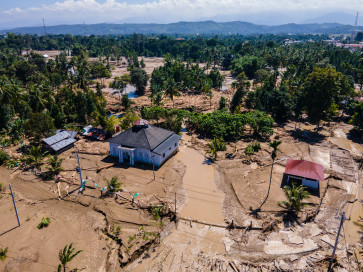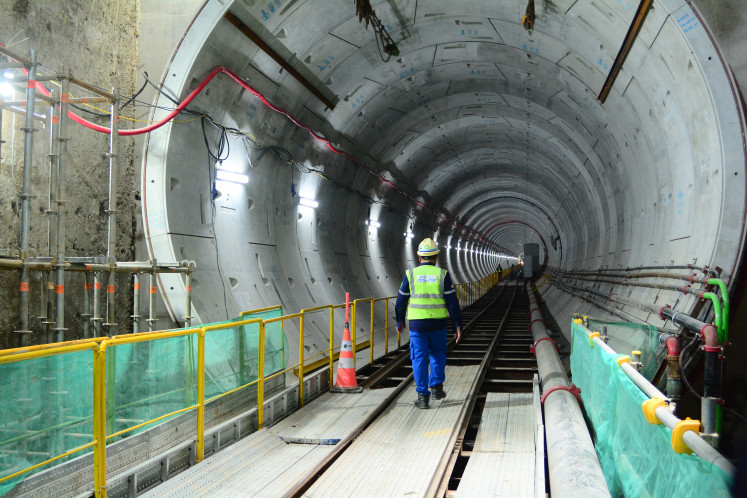Popular Reads
Top Results
Can't find what you're looking for?
View all search resultsPopular Reads
Top Results
Can't find what you're looking for?
View all search resultsBuilding urban resilience
In the last few years, the concept of resilience has rapidly become popular and is increasingly used in urban policy and strategies
Change text size
Gift Premium Articles
to Anyone
I
n the last few years, the concept of resilience has rapidly become popular and is increasingly used in urban policy and strategies. Resilience appears to be fast replacing sustainability.
The concept of sustainability has been at the forefront of urban policy discourse since the Brundtland Commission of the United Nations issued the concept of sustainable development in 1987. Sustainability aims to minimize our impact on the environment, but has one small flaw. Sustainability puts the environment back into balance, but the way the environment behaves is difficult to predict. We are living in an environment with a heightened sense of uncertainty and unpredictability.
There are many environmental events that are out of control and we need to survive when the environment attacks us.
Urban resilience is the ability of urban communities to recover from disasters and disturbances in a sustainable way, maintain a good quality of life and increase its coping capacity to reduce the damages from an unpredictable disaster or disturbance. Resilient urban communities are better prepared for uncertainties and able to adapt to changing conditions.
The World Economic Forum (WCF) released its 2013 Global Risks Report and included a section on resilience in the report.
It is the first such report of the forum that discusses the global risks from the resilience perspective. The report identifies five components of national resilience that are applicable for the urban context.
The components are robustness, redundancy, resourcefulness, response and recovery. Robustness refers to the ability to absorb and withstand disaster and disturbance. Redundancy is the excess capacity to enable the maintenance of core functions in the event of disasters and disturbances.
Resourcefulness involves the ability to adapt and respond flexibly to disaster and disturbances, and transform a negative impact into a positive one. Response means the ability to mobilize quickly in the face of disturbance. Recovery is the ability to regain normality after a disaster or disturbance.
Building urban resilience refers to the development of these five components in the urban system, including buildings, infrastructure and communities. Building urban resilience is a long term program and requires coordination among stakeholders in the city including government agencies, private companies and residents to prepare for, withstand and recover stronger from disaster, disruptions and chronic stresses.
In May 2013, the Rockefeller Foundation announced the Centennial Challenge of 100 Resilient Cities. The foundation received nearly 400 applications from cities around the world ranging from thousand-year-old cities to mega-cities dealing with rapid urbanization. A panel of judges, including former president Bill Clinton, reviewed the applications particularly on how the cities are approaching and planning for resilience and their commitment to building a resilient city.
On Dec. 3, the panel selected the first set of 33 cities for the foundation's 100 Resilient Network. The 33 selected cities include Semarang, Melbourne, New York City, San Francisco, Los Angeles, New Orleans, Ramalah, Rotterdam, Rome, Rio de Jainero, Mexico City and Dakar. These cities have implemented innovative programs and demonstrated positive results for resilience.
For example, New Orleans had experience from dealing with and rebounding from hurricanes Katrina and Isaac and the Deepwater Horizon Oil Spill and learned important lessons about being a resilient city.
Similarly, New York City has learned valuable lessons from Hurricane Sandy and developed programs to protect its residents from coastal flooding and sea level rise that could lead to replicable models for other coastal cities.
Innovative programs for increasing resilience and lessons learned in recovering from disasters and catastrophes from those selected cities should be introduced to other cities for possible replication, including to Indonesian cities. Jakarta and other Indonesian cities should prepare for possible catastrophic disruptions and should develop systems to recover.
Semarang was selected because it has innovative programs to address flash floods and tidal flooding. These include rainwater harvesting, vetiver grass plantation, mangrove rehabilitation and early warning system for floods and vector-borne diseases.
Other Indonesian cities should learn from Semarang and other selected cities and have systems in place to recover, persist or even thrive amid disruptions.
The writer is associate professor and coordinator of the graduate program in Urban Studies and Planning at Savannah State University in Savannah, Georgia, USA.










